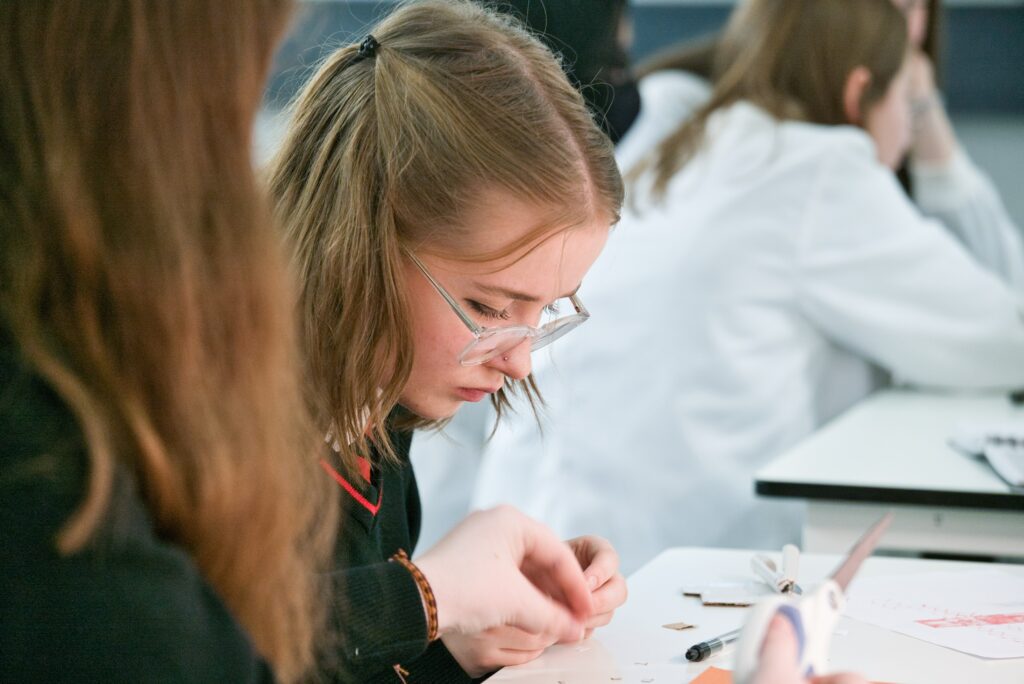
Science practicals need to push experimental boundaries
Article by Dr Jo Foster, IRIS Director, for TES.
Using real-world ideas to inspire students can make science practicals far more engaging, says IRIS director Dr Jo Foster.
Who knew that you could track penguins by spotting their poo from space?
That’s what scientists working in the Antarctic do by using satellites to scan for stains on the snow and ice that might mark the location of previously unknown emperor penguin colonies.
But four years ago, their work was helped enormously by a group of Year 10 students doing an Institute for Research in Schools (Iris) inspired project, who developed the method by showing that you could use a different satellite that offered sharper imagery.
The breakthrough has helped to identify about a third of all the known emperor penguin colonies in the Antarctic.
The power of research
That development underlines just what students can achieve when given the opportunity to engage with real-world research.
Indeed, when many leading scientists who work with Iris visit schools, they often come away astonished by the unique answers that pupils have found.
For example, Iris projects have inspired pupils to investigate better ways to analyse findings from the Large Hadron Collider, find new ways of holding water companies more accountable using existing satellite imagery to spot sewage in our waters, and invent an AI robot to collect tennis balls.
It’s worth noting, too, that all these projects were done using data that anyone could download from the internet for free.
Yet despite the ability to conduct such research, the way children learn about science hasn’t changed a lot over the past few decades, with practical work usually involving the same white-coated lab technicians and Bunsen burners.
Of course, traditional science practicals absolutely have their place and investment in those resources is critical, but there are so many more opportunities for students to engage in real investigations, where the results of experiments are not already known.
Decline in practicals
At present, though, the trend is for fewer practical experiments in schools.
Specifically, a new Science Education Tracker report found the percentage of GCSE students doing hands-on practical work at least fortnightly dropped from 44 per cent in 2016 to 37 per cent in 2019 and to 26 per cent in 2023.
A similar decline in watching teacher demonstrations of practicals at least fortnightly was recorded over the three years (47 per cent, 38 per cent 32 per cent), while the number watching videos of practicals rose to almost 50 per cent.
But as the above examples show, you don’t need costly kit to conduct meaningful scientific impact and we shouldn’t be afraid of “real world” research.
Real-world impacts – at no cost
We need to be open to experimenting with the scope and scale of the practical work in schools, not least by giving students the agency to investigate something they are interested in.
Back in 2014, I had a group of Year 7 students who had a brilliant idea – to make speed bumps out of “oobleck”.
Oobleck is a non-Newtonian fluid that is liquid until energy is added and then turns more solid. It can be simply made by mixing cornflour with water.
The speed ramp would be flat at the speed limit but then harden up as the speed of the car that struck it increased. Ten years later, I can see that their idea has been made and is actually being used on roads in Spain.
Another student-led project in Cornwall involved collecting owl pellets from their dog-walk routes and dissecting these to investigate the diet of the local owl population.
Schools could even study plants growing in their school grounds and measure whether pollution from a nearby road impacts on their diversity.
These are all free science experiments with real-world context and impacts.
Motivation and experimentation
What’s more, doing this can really engage young people in science.
For example, a recent report by the Aspires team at UCL, which has led a longitudinal study of attitudes towards science over the past 14 years, found that two-thirds of young people would like science to be more relevant and practical.
Our own research reports have found 93 per cent of teachers saying that students become more engaged and motivated when involved in a research project. Meanwhile, half of the teachers taking part in Iris projects told us they were more likely to stay in the profession as a result of their involvement.
I’m sure I’m not alone in thinking that the way we are asked to teach science is broken and what we need is a shake-up of the curriculum.
If we are prepared to experiment, I believe we can change the way young people learn about science forever and capture the brilliance of a generation of innovators and pioneers.